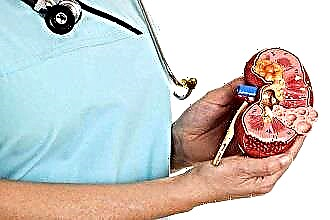"Atorvastatin" is one of the main representatives of the statin group of drugs. The latter are used in therapeutic and cardiological practice for the treatment of vascular atherosclerosis, correction of lipid metabolism and blocking of enzymes in the liver responsible for cholesterol synthesis. This therapy allows you to prevent the most dangerous complications of the disease - angina pectoris, heart attack and stroke. To exclude adverse reactions, the drug should be used according to the instructions, in the dosage prescribed by the attending doctor.
Instructions for the use of "Atorvastatin"
 The drug belongs to the third generation of statins, a group of modern cholesterol-lowering drugs used to correct the lipid composition of blood and treat atherosclerotic vascular lesions.
The drug belongs to the third generation of statins, a group of modern cholesterol-lowering drugs used to correct the lipid composition of blood and treat atherosclerotic vascular lesions.
Recommended in case of low efficiency of the diet and preservation of high parameters in the lipid profile. It is used against the background of lifestyle modification, exercise and weight loss.
The active ingredient slows down and prevents the synthesis of enzymes that affect the process of cholesterol biosynthesis by liver cells, thereby normalizing fat metabolism. The drug reliably reduces the risk of complications of ischemic disease and angina pectoris, has a positive effect on the myocardium of the heart, and reduces the risk of death from a heart attack. Has no carcinogenic effect.
The first result when taken in men and women is observed after 2-4 weeks, and lasts for a long time. A reliably observed decrease in the level of cholesterol by 30 - 45%, LDL by 40 - 50%, triglycerides by 15 - 30%.
Indications: what helps and why drink?
Tablets "Atorvastatin" are prescribed to reduce the fraction of low-density lipoprotein (LP), and increase the high-density lipoprotein, which normalizes the metabolism of fats and cholesterol (CS).
In addition to vascular atherosclerosis in patients with ischemic disease, heart failure and concomitant cardiac pathology, the drug is prescribed for adults for:
- confirmed familial hypercholesterolemia of the heterozygous or homozygous type (genetically determined pathology);
- hereditary disorder of lipid metabolism with high levels of cholesterol and LDL;
- mixed form of dyslipidemia (violation of fat metabolism and changes in lipid profile, triglycerides or cholesterol);
- a greater risk of developing cardiovascular diseases: arterial hypertension (high blood pressure), the presence of bad habits (smoking) and burdened heredity;
- in pediatric practice, children from 10 years old with lipid metabolism disorders, strictly according to the prescriptions of the attending physician.
Composition and form of release
The medicine is available in the form of white or blue coated tablets in blisters for oral administration. The main active ingredient is the calcium salt of atorvastatin, additional ingredients, cellulose and lactose.
In terms of active atorvastatin, the drug is available in dosages of 5, 10, 20, 40 and 80 mg.
Method of administration and dosage: when and how much to give?
The tablets are taken orally, washed down with large amounts of water. Before starting the course of treatment, a consultation with a general practitioner or cardiologist is indicated for prescribing a drug regimen. The calculation of the dose and the frequency of administration is carried out according to the blood test data (lipid profile and general clinical study), taking into account the main and concomitant diseases, the patient's age, his family history.
In persons with lipid metabolism disorders and overweight, a strict diet and correction of physical activity are shown before starting to take the drug. "Atorvastatin" is prescribed against the background of nutrition with a reduced amount of saturated animal fats in the diet, in cases of ineffectiveness of non-drug metabolic correction measures.
Taking into account the history, the dosage is calculated as follows:
- Under 17 years of age, you should not take more than 20 mg per day. As a rule, the initial dose is 10 mg, with further correction after 1 month according to the lipid profile.
- With initially high cholesterol (cholesterol) or mixed form of dyslipidemia, therapy is started with 10 mg for a single dose. After two or four weeks, the dose is changed depending on the dynamics.
- With a family hereditary form, start taking with 40 or 80 mg.
- Persons of the older age group, the elderly and patients with impaired renal function do not need to reduce the dosage.
- An exception is the state of liver failure. With an increase in the liver enzymes ALT and AST three times, the drug is canceled.
Contraindications and side effects
The development of adverse reactions is most often associated with an excess of dosage or the appearance of individual intolerance.
The undesirable actions of the drug develop from various organs and systems:
- Nervous: manifested by increased excitability, irritability. It is possible to develop severe weakness, dizziness or headache, muscle twitching, numbness or tingling in the lower and upper extremities, pain.
- Musculoskeletal: inflammation of individual muscles, pain or stiffness in the arms and legs.
- Organs of the gastrointestinal tract: manifested by poor appetite, nausea or vomiting, discomfort in the epigastric region. Bloating, flatulence, stool disturbance, pain in the umbilical zone.
- Other side effects: inflammation of the gallbladder, liver tissue, blockage and complete blockage of the duct by a stone, which makes it difficult for bile to drain. The development of allergic reactions on the skin, the appearance of an itchy red or pink rash.
- In children and the elderly, a sharp decrease in platelets in the blood is possible, which is manifested by a tendency to bleeding, bruising or bruising on the skin. The most dangerous complication is myopathy (acute muscle inflammation) with severe weakness, flu-like condition. It develops extremely rarely.
When taking "Atorvastatin" simultaneously with an antibiotic, antifungal medication, undesirable reactions may develop. If one of the side effects occurs, it is recommended to stop taking the medication and immediately consult a doctor.
There is no specific antidote, in cases of overdose or the appearance of the above effects, it is shown:
- gastric lavage;
- reception of sorbents (activated carbon);
- antihistamines in case of allergies;
- as directed - symptomatic therapy in a hospital setting.
Contraindications for admission:
- a history of liver disease, gallbladder disease, an increase in liver function tests more than threefold according to a biochemical blood test;
- lactose intolerance;
- children under the age of 10;
- prescribe with caution to persons with alcohol and drug addiction, metabolic and endocrine diseases, patients after surgery;
- women during pregnancy, during breastfeeding are not recommended to take the medicine.
How long to take the drug?
Medicines from the statin group to normalize lipid metabolism are prescribed only in case of low effectiveness of non-pharmacological agents (lifestyle and diet correction), with changes in lipid profile and high cardiovascular risk. The duration of admission and its dosage directly depends on the cause of the disease. In modern treatment regimens for primary and secondary hypercholesterolemia, the use of "Atorvastatin" is designed for a long time.This drug is practically ineffective for short-term administration in courses.
The duration is calculated for each patient individually. A cardiologist or therapist prescribes such a dosage of "Atorvastatin", which will normalize the cholesterol and LDL cholesterol levels, or reduce them by 50%. In most cases, treatment starts with 10, 20 or 40 mg, depending on the medical history. When calculating the scheme, the original instructions for the use of Atorvastatin and medical guidelines are taken into account.
At the beginning of treatment with 10-20 mg of the drug after 2-4 weeks, the lipid spectrum of the blood is assessed, after which the dosage is adjusted for long-term administration. With self-withdrawal of the drug quickly enough, cholesterol and lipoproteins can reach their former high values, which cannot be reduced without taking the medication.
In patients with atherosclerosis and ischemic disease, continuous use can reduce mortality from heart attacks and increase survival by up to 5 to 9 years. In persons with severe familial dyslipidemia, the use of statins prevents the development of dangerous complications (heart attack, stroke) of disability at an early age, and is a proven effective prevention.
Analogues of "Atorvastatin"
Currently, drugs of three generations are actively used to treat atherosclerosis, dyslipidemia and hypercholesterolemia. Modern analogues of Atorvastatin are the drugs Rosuvastatin, Simvastatin, Pravastatin, Fluvastatin and others. Depending on the manufacturer of the product, its trade name may also change.
The original drug with the active substance atorvastatin is called "Liprimar". Its substitutes, or imported analogs, have the names: "Atoris", "Tulip", "Liptonorm". Such drugs are generics - drugs under an international name, or under a proprietary name that differs from the original and registered to another pharmaceutical developer (firm). It should be borne in mind that such drugs can be produced in different dosages and different numbers of tablets in a package.
Conclusions
"Atorvastatin" is a synthetic statin drug used to treat dyslipidemia, hypercholesterolemia and prevent complications in patients with atherosclerosis and cardiovascular pathology. Before prescribing the Atorvastatin regimen, a general examination, blood sampling to assess the level of cholesterol, LDL and HDL fractions, triglycerides are shown. Taking into account the risk of developing adverse reactions, the calculation of the dosage and the duration of taking the medication is carried out by a general practitioner or cardiologist.



